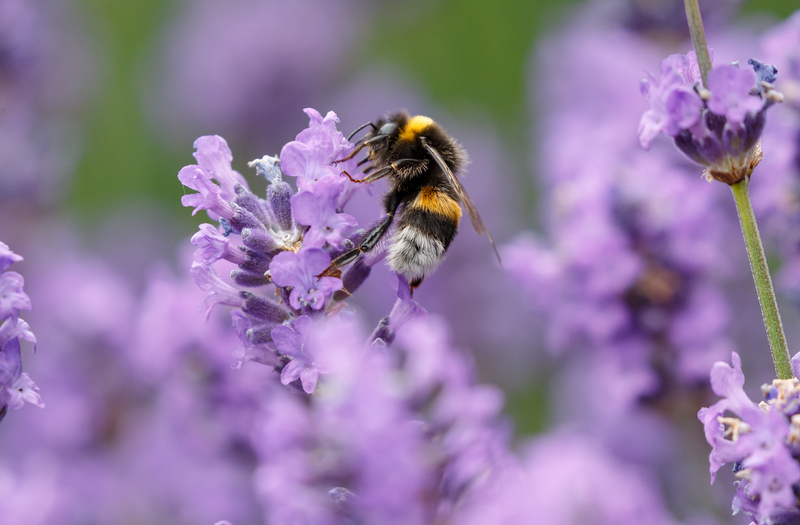Save Your Grass: How to Prevent Drought Damage in Hot Weather
Is your lawn suffering under extreme sun and dry conditions? Drought can wreak havoc on even the healthiest grass, but with the right strategies, you can shield your green patch from the scorching heat. Discover expert advice and actionable tips on how to prevent drought damage in hot weather and maintain lush, resilient grass all summer long.

Understanding Drought Stress in Lawns
Drought stress refers to the physiological effects on grass when it doesn't receive adequate water over an extended period, especially during hot weather. Recognizing the signs early can help you save your lawn from drought damage and implement interventions before your grass turns brown and brittle.
How Drought Affects Grass
- Reduced water availability weakens the grass roots, diminishing their ability to absorb nutrients.
- High soil temperatures accelerate water evaporation and stress grass blades.
- Prolonged dryness can trigger dormancy - grass turns brown to conserve energy but may not recover if drought persists too long.
Early signs of drought damage include a blue-gray tinge to the leaves, visible footprints or mower tracks that linger, and slowed growth. If these appear, it's time to take action to retain healthy grass through the season.
Choosing the Right Grass to Withstand Drought
One of the best ways to prevent drought damage is to start with the right grass species. Some types of grass naturally resist drought better than others due to deeper roots and better adaptability.
Popular drought-resistant grasses:
- Bermuda grass: Known for excellent drought tolerance, common in southern regions.
- Zoysia grass: Dense, deep-rooted, and handles both heat and dry spells admirably.
- Buffalo grass: Native to prairies, needs minimal watering once established.
- Tall fescue: Preferred for its deep root system and resilience in transition climates.
If you're planning to overseed or patch your lawn, opt for these varieties to naturally defend against future dry weather.
Proper Watering Techniques to Prevent Drought Damage
Water management is crucial in preventing grass drought stress. Wise watering preserves water resources and ensures your grass receives enough moisture to survive the hottest months.
When and How to Water Your Lawn
- Water deeply and infrequently: Aim for 1-1.5 inches of water per week, split between one or two sessions. Deep watering encourages roots to grow deeper, enhancing drought resistance.
- Water early in the morning: This reduces evaporation and fungal risk compared to late afternoon or night watering.
- Avoid shallow watering: Light, frequent watering encourages surface roots, making grass more susceptible to drought.
Tip: Place an empty tuna can on your lawn as you water. When it fills to about an inch, you've watered enough for that session.
Smart Irrigation Solutions
- Install drip irrigation or soaker hoses for targeted, efficient watering with minimal waste.
- Use smart sprinklers that adjust based on weather forecasts and real-time soil moisture.
- Collect rainwater in barrels to water during drought restrictions.
Efficient irrigation ensures every drop of water helps your grass survive and thrive in dry conditions.
Soil Health: The Foundation of Drought-Resistant Lawns
Healthy soil improves both water retention and nutrient absorption, making your grass less reliant on frequent watering. Building robust soil structure is essential for drought damage prevention.
How to Improve Lawn Soil
- Aerate annually: Use a core aerator in spring or fall to create pathways for water, nutrients, and air to reach grass roots.
- Topdress with compost: Spread a thin layer ( 1/4 inch) of organic compost every year to increase water holding capacity and boost beneficial microbes.
- Incorporate organic mulch: Grass clippings left on the surface (mulching) help keep soil cooler and moister.
Testing your soil every few years ensures your lawn gets the right nutrients for better drought resilience.
Mowing Practices to Minimize Drought Stress
Mowing too short is one of the most common mistakes that can harm grass, especially during hot, dry periods. Adjust your mowing habits during a drought to protect your lawn.
Best Mowing Techniques for Dry Weather
- Raise your mower blade: Set your mower to its highest setting (3 to 4 inches is ideal). Taller grass shades roots and reduces water loss.
- Mow less frequently: Let the grass grow slightly longer during drought; only mow when necessary, and never remove more than one-third of the blade height at a time.
- Sharpen your mower blades: Dull blades tear grass, making it more vulnerable to diseases and further stress.
Mulch clippings in place to add organic matter and moisture-trapping mulch to your lawn surface, aiding both health and drought recovery.
Fertilize Wisely During Drought
Fertilization helps grass stay healthy, but over-fertilizing or choosing the wrong products during dry spells can do more harm than good. Slow down your fertilization schedule during midsummer or hot, dry months.
- Avoid high-nitrogen fertilizers: These can scorch grass and encourage shallow growth. Wait until moderate weather returns to fertilize aggressively.
- Choose slow-release formulas: These release nutrients slowly, supporting lowered growth without adding stress.
- Test your soil: Apply only the nutrients your lawn is deficient in, based on soil test results.
Proper fertilization is one of the key steps in drought protection for your lawn. Feed smart, not hard!
Control Weeds and Pests That Worsen Drought Stress
Weeds and lawn pests compete for precious water and nutrients, leaving your grass more vulnerable to drought damage. Consistent control measures ensure your grass remains the dominant occupant of your lawn.
- Apply pre-emergent herbicides in early spring to prevent common weeds like crabgrass from taking hold.
- Hand-pull or spot-treat visible weeds promptly, especially during dry periods.
- Practice integrated pest management - encourage beneficial insects, remove thatch, and address any infestations quickly to prevent further lawn stress.
Healthy, dense grass naturally shades out weeds and crowds out pests, but during drought, extra vigilance is crucial.
Additional Tips for Drought-Proofing Your Lawn
Landscape Design Strategies
- Reduce grassy areas: Replace parts of your lawn with drought-tolerant plants, ground covers, or hardscape elements (rock gardens, pathways, mulch beds) to reduce water usage overall.
- Add shade: Plant trees and tall shrubs that can cast filtered shade, lowering soil temperature and slowing evaporation.
- Use drought-tolerant groundcovers: Clover, sedum, and creeping thyme are all water-wise alternatives to traditional turf.
Temporary Solutions in Extreme Drought
- Accept dormancy: Healthy lawns can survive several weeks of dormancy if properly cared for before and after the dry spell. Don't stress your lawn further by overwatering or mowing during this period.
- Spot water high-need areas: Prioritize high-traffic or visible sections with minimal watering instead of trying to maintain the entire yard.
- Limit foot traffic: Dry, stressed grass recovers faster if it isn't also being compacted or physically damaged.
Remember: It's better to "do less, but do it right" during droughts--your grass will repay you when rainfall returns!
Repairing Drought-Damaged Grass
If the damage is already done, don't despair. With cool, wet weather, most established lawns can recover from drought stress if given appropriate care.
Steps to Revive Your Lawn Post Drought
- Resume regular, deep watering as soon as possible.
- Limit fertilizer use until you see new green growth return.
- Overseed bare or thinned-out areas in the fall for cool-season lawns, or late spring for warm-season grasses.
- Continue with proper mowing, weed control, and soil health practices to encourage a robust comeback.
Patience is key--sometimes full recovery takes multiple seasons, especially for heavily compacted or scorched turf.

Frequently Asked Questions About Lawn Drought Prevention
-
How often should I water my grass in a heatwave?
During extreme heat, water only once or twice weekly, deeply soaking the lawn each time. Watering every day is unnecessary and wastes water. -
Is brown grass dead?
Usually not--most brown grass is in dormancy, protecting itself from further damage. With patience and water, green growth typically returns. -
What's the best time to aerate my lawn?
Aerate in early spring or fall, not during peak summer heat, for best recovery and drought resistance. -
Will mowing my lawn short help conserve water?
Quite the opposite! Taller grass shades soil and reduces evaporation. Mow high to protect your lawn. -
Are there alternatives to traditional grass lawns?
Absolutely--consider drought-tolerant groundcovers or xeriscaping to save water and reduce maintenance long-term.
Conclusion: Your Action Plan to Save Your Grass in Drought
Defending your lawn against drought damage requires preparation, smart lawn care techniques, and a little flexibility. Choose the right grass, use proper watering and mowing methods, nurture healthy soil, control weeds and pests, and design your yard for resilience. Remember that grass naturally adapts to short-term stress, and with the right approach, your lawn can recover--even after hot, dry weather.
Don't let the heat destroy the beauty of your yard. With these drought prevention tips, you can enjoy thick, green grass all summer long while conserving precious water for the future.
- Assess your lawn for drought signs regularly.
- Water deeply, mow higher, and feed wisely.
- Strengthen soil, reduce lawn size, and diversify your landscape.
- Practice patience — drought recovery takes time!
Start today to save your grass and prevent drought damage in hot weather for good!